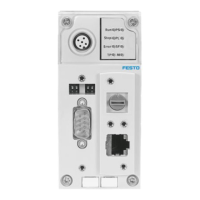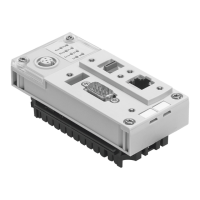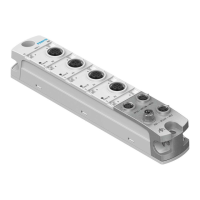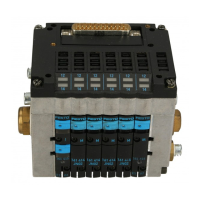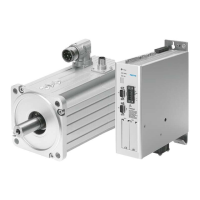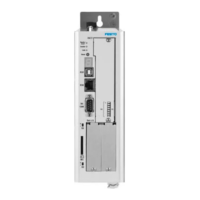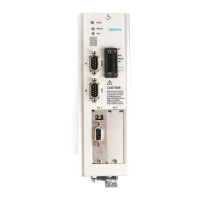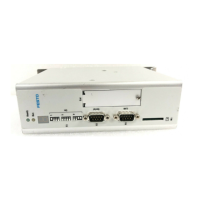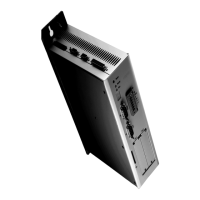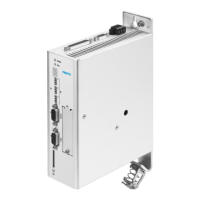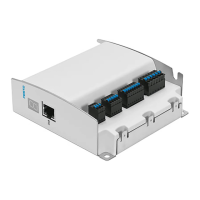B. Basic controlling principles
B−36
Festo P.BE−CPX−CMA X−CONTROL−EN en 0908NH
B.8.1 Influence of the mass on force control
The moving mass consists of the workpiece mass and the tool
mass (or basic load). Often the exact basic load is not known.
m = m
total
= m
current
tool
mass
+ m
current
workpi ece
mass
As with any other positioning process, the workpiece mass
needs to be specified for the identification, too.
m
ident.
= m
tool
mass
ident.
+ m
workpi ece
mass
ident.
During static identification the controller identifies the force
at which the drive is safely held at a standstill. It also deter
mines the forces that are required to let the drive break away
in both directions of movement. The mean value of these
break−away forces is stored as the standstill force in the
identification data.
If you do not take into account the friction forces, the stand
still force F
0
must only just compensate the force due to
weight of the moving mass:
F
0
= p
01
* A
1
p
02
* A
2
= m
ident.
* g * sin α
The total mass m
ident
specified during identification is also
stored in the identification data.
During force control, the identified standstill force F
0
serves
as basic value for the force to be controlled. It compensates
the gravitational force and other external axial forces. Due to
identification (i.e. measurement) of the standstill force F
0
, an
error in the specification of m
ident.
leads to no error in force
control.
If the user specifies different workpiece masses per record,
the difference m
delta
to the identification mass is taken into
account and additionally compensated. The workpiece mass
in the records should therefore be specified precisely, so that
the standstill force can be tracked as best as possible.
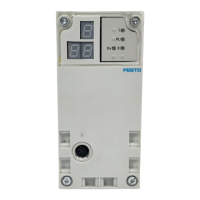
